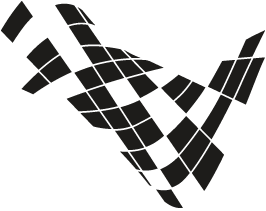Seminars
- Date Time Venue Speaker Seminar Title Affiliation Abstract
- Previous Seminars
- 17/05/2017 14:00 PC-C02 (Portobello) Dr Niloufar Motazedi To Be Determined DRG Group
- 07/06/2017 14:00 PC-C02 (Portobello) John Mottershead Active Vibration Control: Nonlinear and Aeroelastic Problems University of Liverpool
- 12/07/2017 14:00 Portobello, Design Suite (C02) Rob Barthorpe Model-based Methods for Structural Health Monitoring Dynamics Research Group
- 06/09/2017 10:30 LT8, The Diamond Various IWSHM mini-symposium Dynamics Research Group Abstract This is an opportunity for members of the group to present their papers in preparation for the International Workshop on Structural Health Monitoring. Papers will be presented by Tianwei Zhang, Nathan Ray, Ramon Fuentes, Tim Rogers and Paul Gardner.
- 19/10/2017 13:00 LT2, Henry Stephenson Building Tianwei Zhang Treed Gaussian Processes Dynamics Research Group Abstract Mechanical systems while operating are often subject to switching of behaviour due to the change of systematical properties(environment, physical properties, interacting relations and etc). It is common to observe piecewise based behaviours from the system as jointed by these switchings. Such piecewise behaviours require special non-stationary regression techniques for the statistical modelling, which means traditional Gaussian Processes (GP) is generally disqualified. The Treed Gaussian Processes (TGP) is statistical models capable of modelling against the piecewise behaviours and identifying these switchings given the acquired experimental data. Different from the classical TGP model developed by Gramacy, we introduce a new type of TGP based on the very raw idea of Chipman's Bayesian Classification and Regression Trees (BCART), where the inference structure is more straightforward and clear.
- 02/11/2017 13:00 LT2, Henry Stephenson Building Predaricka Deastra The Application of Fluid Inerter for Vibration Suppression of Civil Structures Dynamics Research Group Abstract Many lightly damped flexible structures suffer from unwanted vibrations. Typically a tuned-mass-damper (TMD) can be used to reduce unwanted vibrations of a specific mode of vibration. The inerter is a novel passive vibration control device offering a wide range of potential applications in engineering practice. It has been analytically proven to be an effective device for controlling unwanted vibrations in structural systems. One of the most effective control strategies employing an inerter is the tuned inerter damper (TID) whose inerter element is connected in series with parallel connected spring-damper. When the inerter element is in parallel with the damper element, it is then called Parallel Viscous Damper Inerter (PVID). In this study, we will introduce a new passive modal vibration control strategy for the PVID based on a fluid inerter combined with a linear spring connected in parallel. The fluid inerter produces inertance by the acceleration of oil inside a helical pipe coiled around the outside of the main fluid chamber. The fluid inerter has both inertance and damping in one device and these properties are coupled to each other. Hence, it is a particular challenge to tune both parameters to t with optimized values resulting from a design analysis. In this study, a new analysis will be presented for this device that demonstrates how the PVID with a fluid inerter can be modelled to achieve the targeted parameters.
- 16/11/2017 13:00 LT2, Henry Stephenson Building Haichen Shi An Introduction to Summer Internship at the Alan Turing Institute - “Improving Renewable Energy Modelling & Forecasting” Dynamics Research Group Abstract Haichen will present a short talk on his experience of the summer intern program at the Alan Turing Institute, UK’s national institute for data science. This talk will consist of three main sections: 1. Introduction to the Alan Turing Institute, including overview of their current ongoing research programs, and their future visions; 2. Introduction to the summer intern project, which is in collaboration with the National Grid to provide better and more accurate forecasts of the nation’s renewable energy generations; 3. Introduction to some opportunities the Turing Institute can provide for both academics and students.
- 30/11/2017 13:00 LT2, Henry Stephenson Building Giulio Dolcetti The sound of roughness: how to image a rough surface with ultrasound Dynamics Research Group
- 14/12/2017 13:00 LT2, Henry Stephenson Building Dr Andrea Cammarano Reduced order models for dynamical problems in engineering. University of Glasgow Abstract Despite the increase in computational capabilities, in the last decades it has become evident that high-order models of complex systems cannot always be used for practical applications. This is mainly due to the running time and the computational power that high-order models require. In addition, the need of real-time simulations that can be used to improve control strategies and achieve automatization has led many fields of engineering toward reduced order modelling. “Reduced order modelling” is a common name for a variety of approaches and techniques which are quite different from one another. This talk will explore some of the approaches to reduced order modelling and highlight the similarities and the differences between the associated methodologies. Also, it will highlight the differences between the use of reduced order models in linear and nonlinear dynamical system and will discuss risks and advantages of these techniques.
- 21/02/2018 13:00 LT7, The Diamond Dr Rafael Palacios Apparent Wing Stiffness using Load Control: A Nonlinear Aeroservoelastic Challenge in Aircraft Design Department of Aeronautics, Imperial College London Abstract We investigate computational methods for the design of aerostructures in which aerodynamic load control strategies allow for high compliance. This talk will introduce first modelling approaches for coupled aeroelasticity and flight dynamics of very flexible aircraft. A medium-fidelity approach for nonlinear simulation and analysis, based on geometrically-nonlinear beams and unsteady vortex-lattice aerodynamics, will be introduced and exemplified in the study of the dynamics of solar-powered aircraft. Aerodynamic load control will be then demonstrated in two prototypical examples: first, the response of a flexible vehicle in wake-vortex encounter will be investigated using a feedforward strategy for fast response; second, high improvements in the manoeuvrability of a very flexible flying wing will be demonstrated using predictive control with model updating. The latter is built on an original methodology for nonlinear model reduction in structural dynamics, which will be finally discussed.
- 08/03/2018 13:00 Workroom 2 (The Diamond) Stuart Walker Dynamics research in Marine Renewable Energy DRG Group Abstract Wave and tidal energy are the unrefined cousins of wind energy, and lag behind in their development and public awareness. However, the UK has significant marine energy resources and is home to a European test centre. Despite some funding setbacks to wave energy in recent years, development of both wave and tidal marine energy devices continues in the UK and around the world. Following two recent industry conferences, in this seminar we will look at the technologies and consider the outstanding challenges and engineering opportunities for the dynamics community.
- 12/03/2018 12pm LT5, The Diamond Professor Lawrie Virgin Exploiting 3D-Printing in teaching and research in structural mechanics Duke University, Durham, USA. Abstract This talk will describe how 3D printing, or additive manufacturing, can provide an additional perspective to both teaching and research in engineering mechanics. Sufficiently slender, and hence flexible, structures can be used to provide a practical hands-on component to the understanding of structural behavior (including vibration) for students. The ability to produce high-fidelity models may also facilitate experimental studies for complicated structural geometries in the research realm. Given the rapid advances in 3D printing, in terms of print size, spatial resolution, and choice of different materials, the ideas presented here are likely to gain a more prominent position in teaching and research.
- 22/03/2018 13:00 Workroom 2 (The Diamond) Prof Manolis Chatzis TBC University of Oxford
- 07/06/2018 13:00 LT20, Robert Hadfield Building Predaricka DeastraLuis Urena The effectiveness of an inerter-based damper system & Stability of variable helix milling Dynamics Research Group Abstract Predaricka Deastra will be presenting on THE EFFECT OF A TUNED-INERTER-DAMPER ON THE SEISMIC RESPONSE OF BASE-ISOLATED STRUCTURES In this paper, we asses the effectiveness of an inerter-based damper system for improving the seismic response of a multi-storey base-isolated (BI) structure. In particular, we consider the tuned-inerter-damper (TID) concept that has received considerable attention in the literature recently. When placed at the base of a structure the TID can reduce peak amplitudes of displacement for all vibration modes in the structure, not just the targeted one, as in the case of a tuned-mass-damper (TMD). In this study, the performance of the TID is investigated when it is applied to a BI structure by considering two factors: (1) frequency of input excitation, and (2) damping properties of the base isolation. Through the numerical analysis using both harmonic and more realistic earthquake input excitation, it was concluded that the TID can be effectively used to help in protecting the rubber bearing base isolation from large displacements. And Luis Urena will be presenting on Stability of variable helix milling: model validation using scaled experiments
-
23/11/2018
11:00
Diamond LT6
Lawrence Bull
DRG Seminar 2018-11-23
University of Sheffield
Abstract
Machine Learning for Engineering with Limited Data.
Engineering datasets may be large, but descriptive labels used to describe the measured data are often in short supply. This is due to the fact that the manual investigation of engineering structures is costly and/or impractical; for example, to investigate the cause of some novel data recorded from an offshore wind-farm, this might involve the manual inspection of a turbine 80km at sea. Consequently, in practice, an engineer only wants to label the most critical measured data. Partially-supervised techniques can be utilised to define which observations are likely to be the most informative when labelled. Therefore, these tools can enable a better predictive performance for a machine learning model, despite limited label infromation. -
05/12/2018
10:00
Pam Liversidge, Design Studio 1 (D06)
Julian Gosliga
DRG Seminar 2018-12-05
University of Sheffield
Abstract
Developing a Universal Expression for the Efficiency of Energy Harvesters
Energy harvesters can be used to provide small amounts of power in remote locations, making them suitable for powering wireless sensor networks, such as those used in structural health monitoring or even healthcare. However, there are no universally accepted metrics for assessing the performance of energy harvesters; this can make it impossible to compare designs in any meaningful way. Through physical analogy, it was possible to create expressions for the efficiency of energy harvesters that were independent of the particular design. This allows designers to easily compare linear, non-linear, stochastic, deterministic, single-source, and multi-source energy harvesters. -
19/12/2018
10:00
Diamond LT2
Dr. Yichen Zhu
DRG Seminar 2018-12-19
University of Sheffield
Abstract
Bayesian Operational Modal Analysis with Asynchronous Data
In vibration tests, multiple sensors are used to obtain detailed mode shape information about the tested structure. Time synchronisation among data channels is required in conventional modal identification approaches. Modal identification can be more flexibly conducted if this is not required. Motivated by the potential gain in feasibility and economy, this work proposes a Bayesian frequency domain method for modal identification using asynchronous ‘output-only’ ambient data, i.e. ‘operational modal analysis’. It provides a rigorous means for identifying modal properties as well as the associated uncertainty taking into account the quality of the measured data and their asynchronous nature.
Upcoming Events
Archived Events
-
Rosehips Mid-term Meeting
04/12/24 – 05/12/24
read more
-
The 6th Workshop on Structural Dynamics
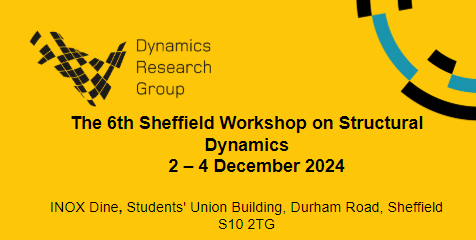
02/12/24 – 04/12/24
read more
-
5th Structural Dynamics workshop
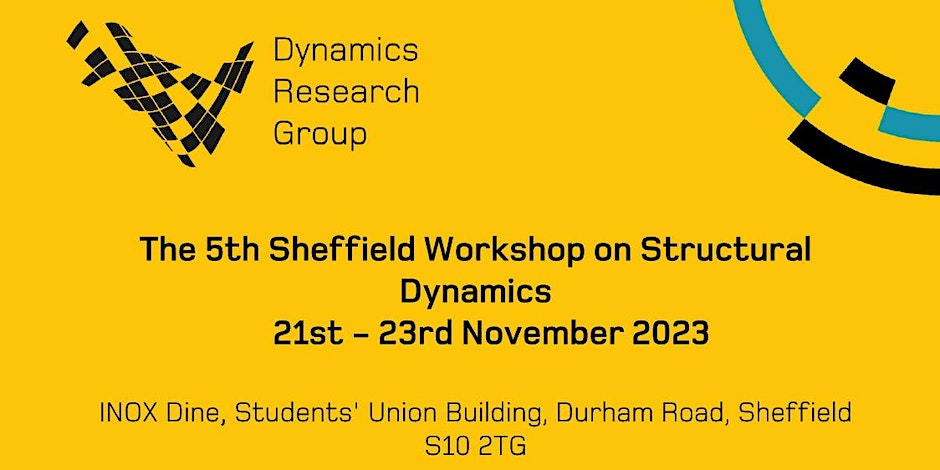
21/11/23 – 23/11/23
read more
-
Dynamics Research Group Showcase 2023
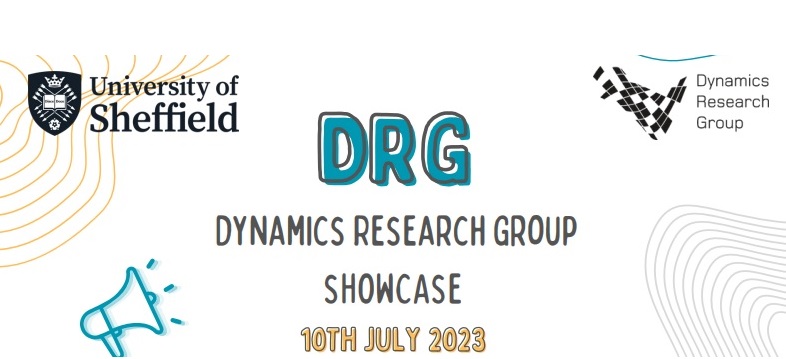
10/07/23 – 10/07/23
The annual Dynamics Research Group showcase is back! Please join us at 13:30 on the 10th July in Mappin Hall for a look at the exciting work the Dynamics Research Group has been up to in the last year
read more
-
2nd International Conference on Structural Health Monitoring of Civil and Maritime Structures (HeaMES 2019)
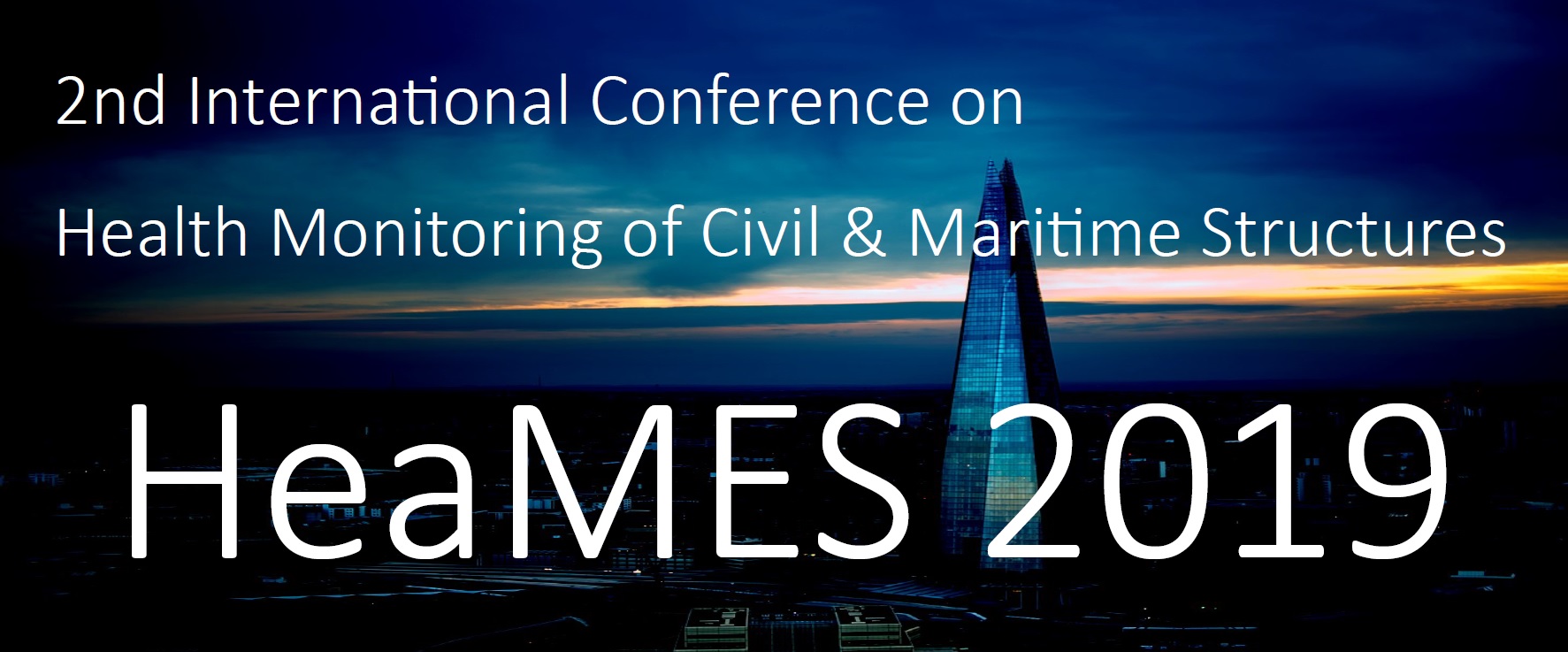
23/05/19 – 25/05/19
Late abstracts can still be accommodated and non-presenting participants are welcome, too. HeaMES 2019 will be a 'boutique', high-quality conferences with some 60 participants, strongly centred on its focal themes. It will bring together a 50/50 mix of international academics and industry, facilitating close interactions between the two sectors.
read more
-
International Conference on Recent Advances in Structural Dynamics (RASD)
15/04/19 – 19/04/19
The Institute of Sound and Vibration Research (ISVR) is pleased to announce the Thirteenth International Conference on Recent Advances in Structural Dynamics will be held at the INSA Lyon, France, on 15-17 April 2019.
read more
-
Dynamics Research Group Showcase 2019
06/03/19 – 06/03/19
The Annual Dynamics Research Group Showcase
read more
-
Acoustics Network Summer School

06/08/18 – 09/08/18
This is a great opportunity to extend your knowledge and make important connections in the field of acoustics. The focus is on the development of key skills in communication, networking, collaboration, entrepreneurship and teamwork, in addition to providing career development advice and information about funding opportunities. Training in signal processing will also be provided. Presenters include Professors and Readers from the University of Sheffield, the University of Bristol, the University of Southampton, University College London, and London South Bank University, and representatives from the Defence Science and Technology Laboratory (DSTL), Thales, Dyson, Ultrahaptics, and the Engineering Panel of the Engineering and Physical Sciences Research Council (EPSRC).
read more
-
7th World Conference on Structural Control and Monitoring

22/07/18 – 25/07/18
The new edition of the WCSCM, 7WCSCM, will be hosted by Harbin Institute of Technology in July 2018. The conference will provide international research community a platform to contribute to the state of the art in such multidisciplinary scientific and engineering environment with new results, fresh ideas and future perspectives.
read more
